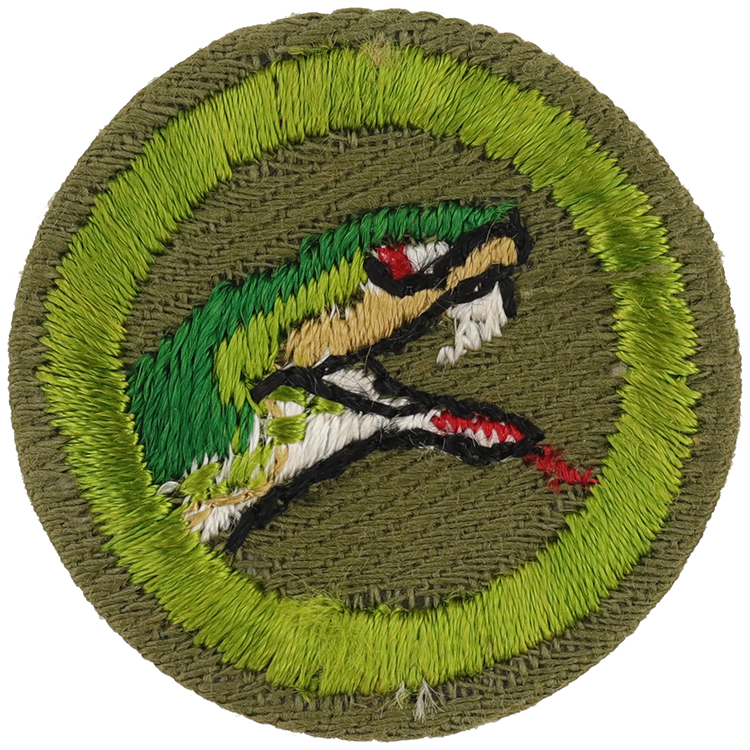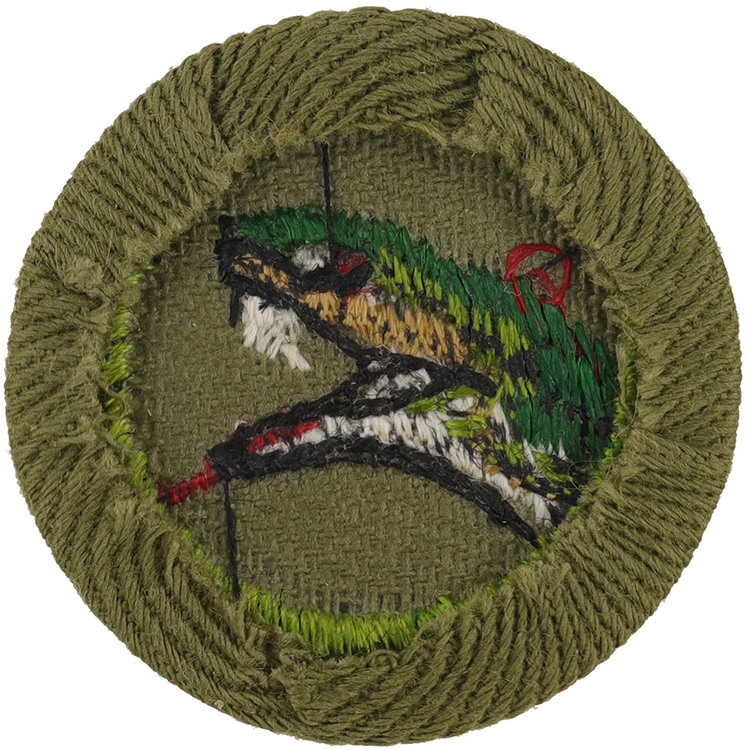
Fig. 1: RepStu-E2-Front
- Cloth: Khaki right twill
- Embroidery: Cotton lock stitch

Fig. 2: RepStu-E2-Reverse
- Back: Black lock stitch, plain NO imprint with starch

Fig. 3: RepStu-E2-mve1-front
- Cloth: Khaki right twill
- Embroidery: Cotton lock stitch

Fig. 4: RepStu-E2-mve1-reverse
- Minor variation: White lock stitch, plain NO imprint with starch

Fig. 5: RepStu-E2-mve2-front
- Minor variation: Eye, head, and black highlight differences

Fig. 6: RepStu-E2-mve2-reverse
- Minor variation: White lock stitch, plain NO imprint with starch
Item Name: Reptile Study 1947 - 1960
Item ID: RepStu-E2
Collector Rating: 1
Requirements December 1943 until June 1972
1. Make sketches from his own observation, showing markings and color patterns of seven reptiles and three amphibians found in his state, and record the habitat and habits of each species.
2. Know approximately the number of species and general distribution of reptiles and amphibians in the United States.
3. Describe how reptiles and amphibians reproduce themselves.
4. Give ten superstitions about snakes and a correct explanation in each case.
5. Describe in detail six poisonous snakes and lizards found in the United States, and their habits. Name those found in his own state. Demonstrate first aid treatment for snake bite.
6. List ten reptiles or amphibians useful to man either as food or in controlling insects or rodent pests, and state how food is taken. List food habits of each species. If there are laws in force in his state for their protection, tell the reasons each is protected.
7. From actual observation describe how reptiles move forward. Describe the functions of the muscles, ribs and belly plates.
8. Describe the outstanding differences between (a) alligators and crocodiles; (2) toads and frogs; (3) newts and the other species of salamanders; (4) salamanders and lizards.
9. Maintain in a terrarium, aquarium or properly constructed cage, one or more reptiles or amphibians for at least a month, recording the food accepted, the method employed in eating, changes in color or skin shedding, and general habits during this period.* OR Keep the eggs of one amphibian or reptile from the time of laying until hatching and record the length of time required for hatching, and method of hatching.
10. Go out at night and identify three kinds of toads or frogs by their voices. Stalk each with a flashlight and discover how each stings, and from where (water, in tree, etc.). Imitate for Counselor the song of each. OR Take a recognizable photograph of a turtle, a snake and an amphibian. Photographs must be from living specimens. OR Give a brief, informal talk to a small group on reptiles or amphibians, using at least three living specimens for illustration purposes.*
* The Scout should use non-poisonous reptiles only in fulfilling this requirement.


